Modernizing Design: The Impact of Artificial Intelligence in 3D Modeling Studios

The process of creating 3D assets has traditionally been time-consuming and complex, often limiting the efficiency and creative potential of artists and designers.
Despite the demand for high-quality 3D models across various industries, the manual labor involved in crafting these models can stifle innovation and productivity, putting a strain on resources and timelines.
The emergence of generative AI technologies in 3D modeling is revolutionizing the field by making the creation of 3D assets faster and more efficient.
AI model generators and the automation of complex tasks allow artists to generate 3D models from diverse inputs like text, images, and videos with unprecedented accuracy and speed.
This transformation frees 3D artists and designers to focus on the creative aspects of their work, significantly enhancing innovation and productivity in the 3D modeling industry.
Key Takeaways
Lead the future of 3D modeling with AI.
Tailor this prompt to your studio and uncover the innovative applications of AI in your design processes.
Artificial Intelligence (AI) is significantly impacting the 3D modeling industry, streamlining workflows, enhancing creativity, and improving efficiency. AI technologies, such as machine learning, generative adversarial networks (GANs), and neural networks, are being integrated into 3D modeling processes to automate tedious tasks, generate complex models, and provide intelligent solutions for design challenges. Here's a guide to leveraging AI in a 3D modeling studio:
### Customizable Prompt for Leveraging AI in a 3D Modeling Studio
"How can [Studio Name], a 3D modeling studio specializing in [Industry/Application, e.g., video games, architecture, product design], integrate AI technologies to revolutionize its design processes, enhance creativity, and improve project turnaround times? Consider the application of AI for automated modeling, texture generation, intelligent editing, and real-time rendering optimizations."
#### Key Areas to Explore:
1. **Automated Modeling**: How can AI be utilized to automate the creation of complex 3D models, reducing manual work and allowing designers to focus on more creative aspects of projects?
2. **Texture Generation and Application**: Discuss the role of AI in generating realistic textures and applying them to 3D models, enhancing visual quality without extensive manual effort.
3. **Intelligent Editing and Refinement**: Explore how AI can offer intelligent suggestions for model improvements, analyzing designs for structural integrity, aesthetics, or functional optimization based on the specific industry/application.
4. **Real-Time Rendering Optimizations**: How can AI contribute to optimizing rendering processes, reducing computation time while maintaining or enhancing visual quality?
5. **AI-Assisted Animation**: Discuss the integration of AI in the animation process, from automating keyframe generation to creating realistic movement patterns for characters or objects.
6. **Collaborative AI Tools**: Explore the potential for AI tools to enhance collaboration within the studio and with clients, offering interactive and intelligent platforms for project reviews and modifications.
7. **Data-Driven Design Insights**: How can machine learning analyze historical project data to provide insights that guide design trends, client preferences, and project management decisions?
### Guide for Use:
- Personalize the prompt with details about your 3D modeling studio, including the specific industry or application focus, to tailor the exploration of AI integration.
- Use the insights generated to identify AI technologies and tools that can best support your studio's design processes and creative goals.
- Experiment with different AI applications in small-scale projects to assess their impact and refine their use in your studio’s workflow.
- Stay updated on advancements in AI technologies and their applications in 3D modeling to continuously innovate and maintain a competitive edge.
Integrating AI into 3D modeling studios not only streamlines design and production processes but also unlocks new levels of creativity and efficiency, enabling studios to meet the evolving demands of their industries.Introduction to AI in 3D Modeling
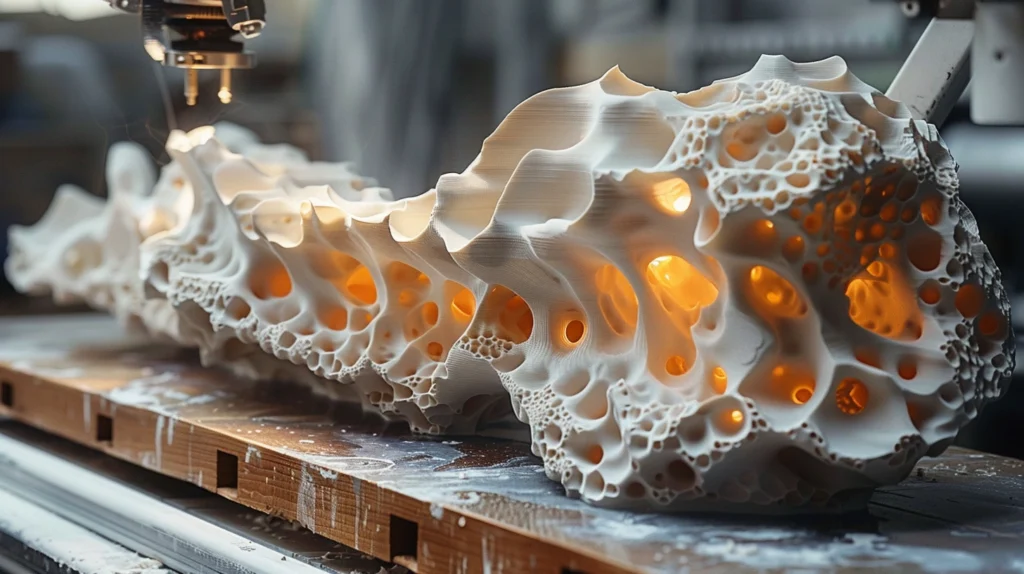
In the area of 3D modeling, the advent of artificial intelligence (AI) has marked a pivotal shift, transforming traditional processes into more efficient, accurate, and creative endeavors. This transition is reshaping industries reliant on 3D content, such as animation, game development, and design, offering unprecedented opportunities for creators and businesses alike.
The Evolution of 3D Modeling with AI
The journey of 3D modeling has been significantly revolutionized by the integration of AI technologies, marking a new era in digital creation. Traditional 3D modeling techniques, while effective, often required extensive time, effort, and expertise, limiting the speed of content creation and innovation. The introduction of AI in this space has catalyzed a transformative shift, characterized by:
- Time Efficiency: AI-driven tools like 3D AI Studio have enabled the generation of 3D models within seconds from just text or image inputs, reducing the creation process by up to 95%.
- Cost-Effectiveness: Utilization of AI for 3D modeling drastically cuts costs, saving users up to 90% of traditional expenses, albeit with additional fees for high-performance hosting.
- Precision and Adaptability: AI models offer enhanced detail and accuracy while learning from previous outputs, tailoring future creations to align with user preferences.
- Creative Amplification: Far from replacing human creativity, AI serves as a powerful ally, allowing artists to push the boundaries of imagination and bring sophisticated visions to life.
Defining AI-Powered 3D Modeling
AI-powered 3D modeling refers to the use of artificial intelligence technologies to automate and enhance the creation of three-dimensional digital objects. It encompasses a range of applications, from the development of high-quality 3D assets for gaming and animation to the production of realistic 3D representations for design and manufacturing. Key components include:
- Generative AI: This aspect of AI focuses on producing new 3D models from textual descriptions or 2D images, enabling creators to generate 3D models with unparalleled speed and efficiency.
- Rendering Acceleration: Technologies like Nvidia’s DLSS 3 leverage AI to expedite the rendering process, boosting speeds by up to 530%, a crucial advantage for time-sensitive projects.
- Adaptive Learning: AI tools progressively refine their output based on user interactions, promoting an iterative design process that improves over time.
The Technology Behind AI in 3D Modeling
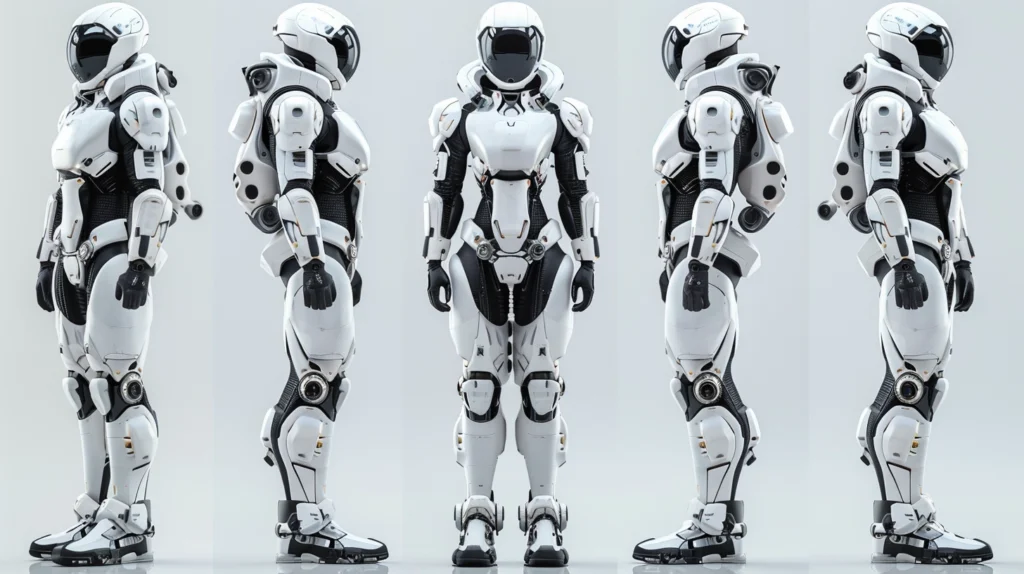
How AI Transforms Traditional 3D Modeling Processes
Artificial Intelligence (AI) is revolutionizing the 3D modeling sphere by introducing smarter, faster, and more creative ways of turning ideas into high-quality 3D representations. Traditional methods, often labor-intensive and time-consuming, are being supplemented and, in some cases, replaced by AI-driven processes. Here’s how AI is making a difference:
- Automating Repetitive Tasks: AI tools can automate mundane tasks such as texturing, rigging, and basic modeling, allowing 3D artists to focus on more complex and creative parts of the project.
- Speeding Up the Design Process: With AI, processes that previously took hours or days now can be completed in a fraction of the time. For instance, generate 3D models from text inputs has become possible, slashing development times significantly.
- Enhancing Creativity: AI-powered 3D model generators offer 3D artists new possibilities for creativity. These generators can produce 3D assets based on vague or abstract descriptions, enabling artists to explore creative avenues that were previously inaccessible.
- Improving Accuracy and Precision: AI algorithms excel at analyzing data and learning from it, which leads to the creation of 3D models with higher precision and realism. This capability is especially valuable in fields such as 3D animation and game development.
AI Algorithms and Their Application in 3D Modeling
At the core of AI-driven 3D modeling are sophisticated algorithms that understand and interpret user inputs, transforming them into detailed 3D content. A look at some of these algorithms reveals the depth of AI’s role:
- Generative AI: This form of AI focuses on creating content. In 3D modeling, generative AI can produce detailed and accurate 3D models from simple sketches or text descriptions, enabling a rapid transition from concept to digital model.
- Neural Networks: These are used for more nuanced tasks such as texturing and lighting, automatically adjusting parameters to create realistic effects based on the environment depicted in the 3D model.
- Machine Learning (ML) Algorithms: ML algorithms help in refining the 3D models by learning from a vast database of images and objects, ensuring that the generated models are not only detailed but also contextually accurate.
- Animation and Game Development: AI speeds up the creation of animated characters and game environments, ensuring detailed and immersive experiences.
- 3D Printing: AI algorithms optimize 3D models for printing, enhancing the precision and quality of printed objects.
- Virtual and Augmented Reality: AI helps in creating realistic 3D environments for VR and AR applications, enhancing the user
Benefits of Using AI in 3D Modeling Studios
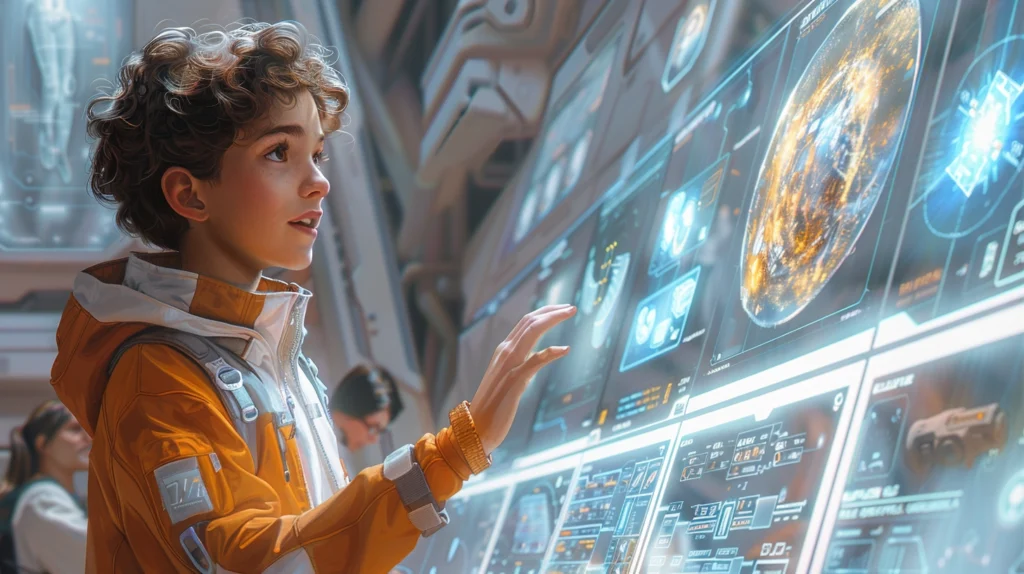
The incorporation of artificial intelligence (AI) in 3D modeling studios has crafted a new epoch in the area of digital creation. AI has effectively bolstered the capabilities of 3D artists, enabling them to produce high-quality 3D models with unprecedented speed and precision. This enhancement is particularly palpable across various industries, including game development, animation, and 3D printing, which thrive on the creation of meticulous and realistic 3D content.
Increased Productivity and Efficiency
AI-driven tools and generative AI technologies have significantly reduced the time and effort required to create 3D models. Unlike traditional methods, AI algorithms can generate detailed 3D assets in a fraction of the time, facilitating rapid prototyping and iterative design processes. This is especially critical in game development and animation, where the demand for complex and immersive environments is incessantly high.
- Speed enhancement allows for multiple projects to progress concurrently.
- AI’s capability to learn and adapt from previous models enhances workflow efficiency.
- Reduction in human labor for developing 3D content translates to cost savings and faster content creation.
Enhanced Accuracy and Detail in 3D Models
At the core of AI’s impact is its capacity for enhancing precision and intricacy in 3D models. AI-powered 3D modeling software ensures a consistent level of detail and accuracy, crucial in fields where accurate representations can make or break a project. For instance, architectural visualizations and product prototypes necessitate a high degree of fidelity to actual designs, a requirement that AI fulfills with ease.
- AI model generators enable the creation of high-quality 3D models with intricate details.
- Adaptive learning mechanisms of AI ensure errors are minimized over time.
- AI-generated 3D models exhibit unmatched realism, essential for 3D printing and high-end animations.
Streamlining the 3D Modeling Workflow
The influence of AI extends beyond creation, into optimizing the entire 3D modeling workflow. From text to 3D, AI tools can generate 3D models from text inputs, significantly lowering the barrier to entry for individuals lacking advanced 3D modeling skills. Also, AI automates repetitive tasks, allowing 3D artists to focus on more complex and creative aspects of model design.
- Real-time AI-powered 3D rendering enhances visualization and animation processes.
- AI facilitates the conversion of 2D images into 3D models, streamlining asset creation.
- Adaptive AI tools cater to personalized edits, fostering an environment where 3D content creation becomes accessible to everyone.
In summation, AI in 3D modeling studios has revolutionized the way we approach 3D content generation. Its benefits underscore the transformative role AI plays, not just in enhancing productivity and efficiency but also in opening new vistas for creativity and innovation in digital art and design. By harnessing the power of AI-powered 3D tools, studios across the globe are setting new benchmarks for quality, realism, and dynamism in the creation of 3D masterpieces.
Challenges and Considerations
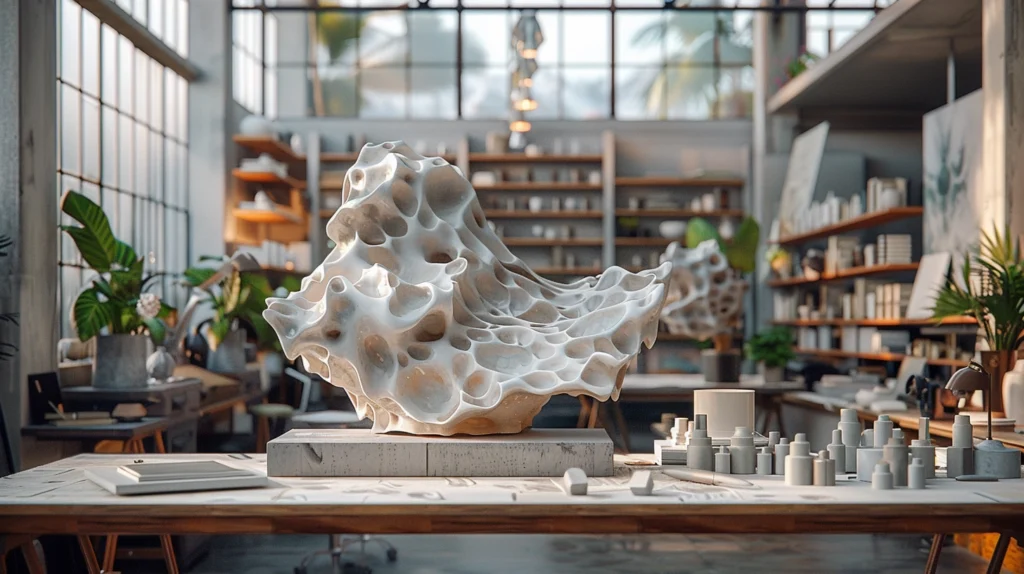
The incorporation of artificial intelligence (AI) in 3D modeling studios presents a blend of opportunities and challenges. While AI has revolutionized the way 3D content is created, ensuring quality, innovation, and efficiency, several considerations emerge. Studios must navigate these complexities to leverage AI effectively in 3D modeling and animation.
Balancing AI Automation with Creative Control
One of the primary challenges lies in Balancing AI Automation with Creative Control. AI-powered tools, with their capacity to generate 3D models and automate tasks, can significantly accelerate 3D content creation. But, maintaining the artist’s creative influence is crucial. Key points include:
- Ensuring AI tools enhance rather than replace the creative input of 3D artists.
- Integrating AI in a way that it supports and elevates the creative process, allowing for high-quality 3D models that reflect the artist’s vision.
- Establishing mechanisms to fine-tune AI outputs, ensuring the final 3D assets align with project requirements and artistic direction.
Addressing the Learning Curve for New AI Tools
The introduction of new AI tools in 3D modeling studios also brings a significant learning curve. Familiarization with AI-powered 3D model generators and other AI tools is essential. Strategies to mitigate this challenge include:
- Providing comprehensive training and resources to 3D artists and technical teams.
- Encouraging collaboration between AI developers and 3D modeling professionals to tailor tools to the needs of the industry.
- Facilitating an environment of continuous learning to keep pace with rapidly evolving AI technologies.
Ensuring Data Privacy and Security in AI-Driven Processes
Data privacy and security are paramount in AI-driven 3D modeling processes. As studios leverage AI to create and refine 3D models, safeguarding the underlying data becomes essential. Considerations here involve:
- Implementing robust data protection measures to secure sensitive information involved in 3D content creation.
- Adhering to legal and ethical standards about the use of AI, particularly when generating 3D representations based on real individuals or copyrighted designs.
- Employing encryption and secure data storage solutions to prevent unauthorized access to 3D models and related assets.
By addressing these challenges and considerations, 3D modeling studios can fully embrace the benefits of AI, pushing the boundaries of 3D content generation and opening new avenues in animation, 3D printing, and beyond. The integration of AI not only streamlines the creation of 3D models but also enriches the scope for innovation, setting new benchmarks in quality and realism.
Applications of AI in 3D Modeling
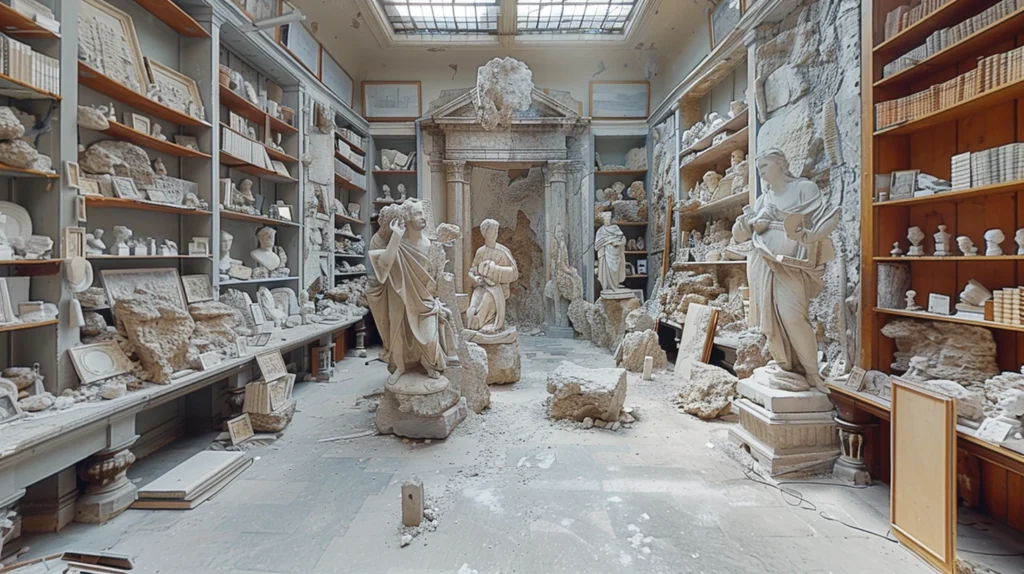
The integration of Artificial Intelligence (AI) within 3D modeling studios has revolutionized the way professionals approach content creation, game development, and architectural visualization, among others. This section details specific applications of AI in enhancing the creation and manipulation of high-quality 3D models across various industries.
Game Development and Virtual Reality
- Speed and Efficiency: AI-driven tools automate the generation of complex 3D environments and characters, significantly reducing development time. This efficiency allows developers to focus on game mechanics and user experience.
- Realism: Through AI-powered 3D modeling, developers create realistic textures and animations that enhance the player’s immersion.
- Custom Content Generation: AI can generate 3D models from text inputs, enabling rapid creation of diverse game assets based on natural language descriptions.
Architectural Visualization and Real Estate
- Automated Model Generation: Architects and designers leverage AI to create 3D models of buildings from 2D blueprints, streamlining the initial stages of design.
- Enhanced Presentations: AI-assisted 3D rendering produces realistic visuals of architectural projects, improving client presentations and marketing materials.
- Virtual Tours: AI-enhanced 3D modeling and animation help the creation of interactive virtual tours, offering potential buyers immersive experiences of properties.
Film Production and Special Effects
- Character Animation: AI 3D animation tools automate the creation of lifelike character movements, reducing reliance on manual keyframing.
- Visual Effects (VFX): Generative AI enables the creation of complex 3D assets and environments, offering filmmakers tools to craft scenes that would be impractical or impossible to shoot in the real world.
- Cost Reduction: Automating aspects of 3D content generation lowers production costs, making high-quality VFX accessible to smaller studios.
- Rapid Prototyping: AI assists in quickly converting sketches into detailed 3D models, accelerating the prototyping phase and enabling more iterative design processes.
- Material Simulation: AI-powered 3D software can simulate the physical properties of different materials, allowing designers to test and modify products virtually.
- Customization at Scale: AI-driven systems can generate 3D models based on specific customer requirements, paving the way for personalized products without increasing labor or time costs.
In each of these fields, AI not only enhances the efficiency and quality of 3D modeling tasks but also opens up new avenues for creativity and innovation. By offloading repetitive tasks to machines, 3D artists and designers are free to focus on the more nuanced aspects of their work, leveraging AI to push the boundaries of what’s possible in game development, architectural visualization, film production, and product design.
Future Trends in AI and 3D Modeling

The intersection of Artificial Intelligence (AI) and 3D modeling is set to revolutionize the realms of design, animation, and visual effects further. Innovations in AI are not just transforming how 3D content is created but are also redefining the limits of creativity and efficiency in content creation. With advancements in AI technology, professionals in industries ranging from game development to architectural visualization can look forward to a future where creating high-quality 3D models, environments, and animations becomes more intuitive, efficient, and aligned with human creativity.
Predictions for AI’s Role in Future 3D Modeling Innovations
- Generative AI Tools: Generative AI will play a pivotal role in automating the creation of intricate 3D models and textures. These tools will allow 3D artists to generate high-quality 3D assets with minimal input, drastically reducing the time and effort required in content creation.
- AI-Driven Animation: The use of AI in 3D animation is expected to simplify complex animation tasks, making it easier to create realistic character movements and facial expressions. AI algorithms will analyze real human motions to provide 3D animators with more accurate references, enhancing the realism of 3D characters.
- Efficiency in Workflow: AI tools will significantly improve workflow efficiency in 3D modeling studios. From optimizing 3D mesh topology to automatic UV mapping, AI will accelerate tasks that traditionally consume substantial amounts of time, allowing 3D artists to focus on more creative aspects of modeling.
- Customization and Personalization: AI will enable unprecedented levels of customization in 3D modeling. Whether it’s in game development or product design, AI models will help the creation of personalized 3D content on a large scale, tailoring experiences and products to individual preferences.
- Enhanced Collaboration: AI-powered 3D modeling tools will foster better collaboration between professionals by providing a unified platform that bridges communication gaps. These tools will enable real-time updates and feedback, streamlining the design process and improving final outcomes.
- Virtual Reality (VR) and Augmented Reality (AR): Combined with AI, VR and AR technologies will offer immersive design and visualization experiences, enabling 3D artists and designers to interact with their creations in real-time, enhancing the design accuracy and the overall creative process.
- 3D Printing: The synergy between AI and 3D printing technology will revolutionize production processes, allowing for the creation of complex objects with high precision. AI algorithms will optimize 3D models for printing, ensuring efficiency and reducing material waste.
AI in 3D Modeling Tools and Software
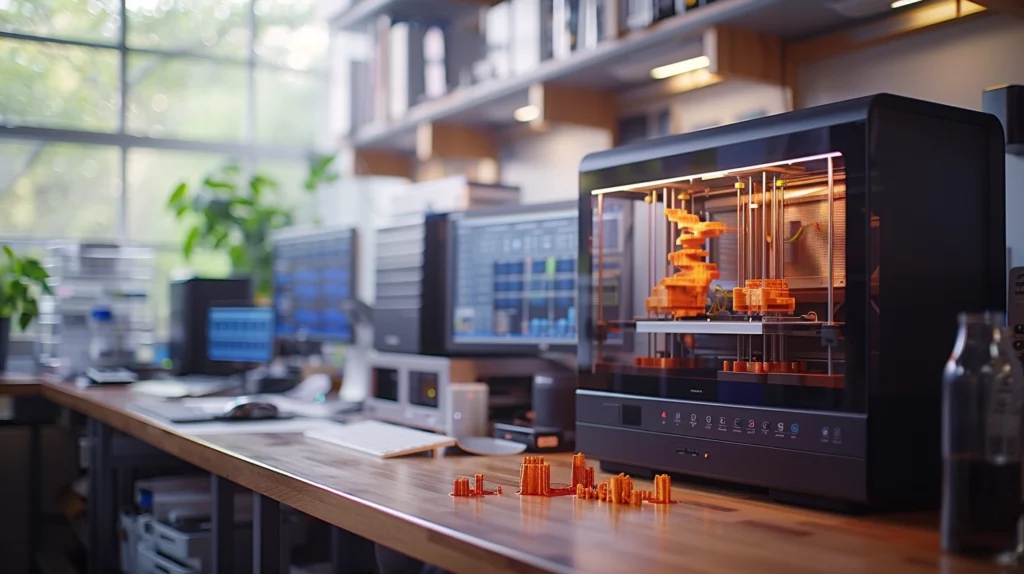
Overview of Popular AI-Enhanced 3D Modeling Software
The integration of Artificial Intelligence (AI) in 3D modeling software has ushered in a new era for content creation, game development, graphic design, and animation. These AI-enhanced tools assist 3D artists by optimizing workflows and generating high-quality 3D models with improved accuracy and speed. Notably, technologies like Nvidia’s DLSS 3 and frameworks from Intel and AMD leverage AI for advanced pixel prediction, resulting in significant rendering speed boosts. The following software represents the forefront of AI integration in 3D modeling:
- Masterpiece Studio: Excels in creating detailed 3D models from text inputs, demonstrating the power of natural language in shaping 3D content.
- Adobe Substance 3D: Known for AI-powered texturing that automates and refines the process of applying realistic textures to 3D objects.
- Blender: With its open-source model, Blender has embraced AI for tasks like 3D animation enhancement and real-time rendering, making high-quality 3D creation accessible to everyone.
- Autodesk Maya: Integrates AI to streamline 3D modeling and animation, offering solutions for generating complex 3D environments and characters efficiently.
- ZBrush: Uses AI for intelligent sculpting which aids artists in creating detailed 3D meshes with a level of intricacy that closely mimics real-world textures.
Comparing Features and Capabilities of AI 3D Modeling Tools
The capabilities of AI in 3D modeling tools vary widely, with each offering unique features that cater to different aspects of the 3D creation process. Key areas where AI greatly enhances functionality include:
- Speed and Performance: AI technologies drastically reduce the time it takes to produce 3D models, allowing artists to generate 3D content in a fraction of the time.
- Automation of Tedious Tasks: AI handles repetitive tasks, such as 3D asset generation and texture mapping, freeing up creators for more complex design work.
- Quality Enhancement: Through generative AI and AI models, these tools can create realistic 3D avatars and environments that were not possible before due to human labor constraints.
- Customization and Versatility: With AI-powered 3D model generators, artists can easily customize designs and generate fully functional 3D models from simple text prompts or natural language inputs.
Real-World Examples and Case Studies

This section highlights how artificial intelligence (AI) has made significant strides in the domain of 3D modeling, showcasing real-world examples and case studies. These narratives emphasize the practical applications and impact of AI technologies in various industries, underlining the transformative potential of AI in generating high-quality 3D content.
Success Stories of AI in 3D Modeling Projects
1. Nextech3D.ai’s AI Search Engines: Leveraging AI, Nextech3D.ai developed advanced search engines capable of sifting through extensive libraries to find and modify pre-existing 3D models. This technology not only boosts productivity for designers but also streamlines the process of creating realistic 3D assets.
2. Conterra Networks’ Implementation: Highlighting a direct application in the industry, Conterra Networks adopted AI-powered 3D model search engines, significantly enhancing their in-house production processes. The company plans to extend this technology to other businesses, hinting at a new revenue stream and a broader impact on the market.
3. Real-Time AI-Powered Rendering: A notable advancement is the real-time AI-powered rendering of 3D models from minimal images. This technology drastically reduces the time required to generate fully functional 3D models, illustrating AI’s potential to streamline content creation across various sectors.
These examples serve as a testament to AI’s role in not just simplifying but also enhancing the accuracy and efficiency of 3D modeling practices.
- Game Development: Developers are using AI to create immersive 3D environments and characters, reducing development time and creating more engaging player experiences.
- Animation and Film: AI tools help the creation of complex 3D animation and visual effects, enabling artists to focus on creativity rather than the technicalities of animation.
- Graphic Design and Content Creation: AI-powered 3D modeling tools assist graphic designers in producing high-quality 3D content, ranging from product mockups to interactive web elements, in a fraction of the time traditionally required.
- 3D Printing: AI is revolutionizing 3D printing by optimizing models for print readiness, thereby improving the quality and sustainability of printed objects.
These industries emphasize the versatility of AI in enhancing the creation of 3D content, showcasing a cross-sectoral impact that promotes innovation, efficiency, and heightened creativity. Each sector’s adoption of AI in 3D modeling underscores the significant reduction in human labor and time required to produce detailed, high-quality 3D models, embarking on a new era of digital design and content creation.
Creating a Side Hustle with AI in 3D Modeling

In today’s rapidly evolving digital world, artificial intelligence (AI) plays a pivotal role in transformative processes across various fields, including 3D modeling. This transition has not only opened up new avenues for professional 3D artists but also for individuals looking to create a lucrative side hustle. Leveraging AI in 3D modeling can lead to unprecedented opportunities, given the surge in demand for high-quality 3D content in industries such as game development, animation, and graphic design.
Identifying Opportunities in the Market
To successfully navigate the 3D modeling market, it’s crucial to identify specific areas where AI-enhanced 3D models are in high demand. These areas include:
- Game Development: Creating intricate environments and characters.
- Animation and Film: Producing detailed animations with less manual effort.
- Graphic Design and Content Creation: Generating unique visuals for digital platforms.
- 3D Printing: Designing complex objects for printing in a fraction of the time.
- Education: Developing interactive 3D content for more engaging learning experiences.
A keen understanding of these markets can help aspiring 3D artists tailor their services and products, positioning them as go-to experts for AI-generated 3D content.
Building Skills and Expertise in AI-Enhanced 3D Modeling
Mastering AI-powered 3D modeling tools and software is essential for creating a competitive side hustle. Tools like Autodesk’s Generative Design, NVIDIA Omniverse, and Adobe Substance 3D offer functionalities that can drastically reduce the time and effort required to create realistic 3D models. Acquiring skills in using these tools includes:
- Learning the Basics: Understand the principles of 3D modeling and AI.
- Advanced Training: Dive deeply into specific software through tutorials and online courses.
- Practice: Continuously create 3D models to build a robust portfolio.
- Stay Updated: Keep abreast of the latest advancements in AI tools for 3D modeling.
Marketing Your AI 3D Modeling Services
With skills in hand, the next step is to effectively market your AI 3D modeling services. Strategies include:
- Creating a Portfolio: Showcase your best 3D models to attract potential clients.
- Networking: Join online communities and forums related to 3D modeling and AI.
- Social Media: Leverage platforms like Instagram and LinkedIn to display your work.
- Offer Freebies: Provide sample models to demonstrate your capabilities and attract interest.
Potential Challenges and How to Overcome Them
While AI in 3D modeling presents lucrative opportunities, it also comes with challenges such as keeping up with rapidly changing technologies and managing client expectations for high-quality 3D models. To overcome these obstacles:
- Invest in Continual Learning: Dedicate time to learn new features and tools.
- Manage Expectations: Clearly communicate the scope and limitations of AI-enhanced 3D modeling to clients.
- Seek Feedback: Use client and peer feedback to improve your models and service quality.
- Collaborate: Working with other 3D artists can provide mutual support and shared knowledge.
By addressing these challenges head-on, individuals can successfully create a side hustle with AI in 3D modeling, tapping into the growing demand for 3D content and leveraging the efficiencies AI brings to the creative process.
Conclusion
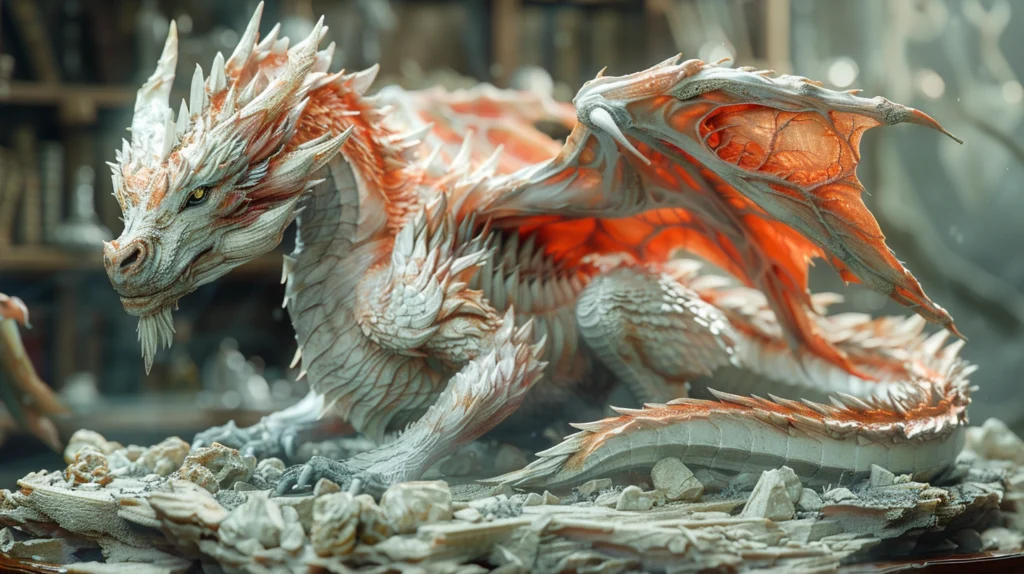
The Transformation of Workflows
The integration of Artificial Intelligence (AI) has markedly transformed the 3D modeling industry. AI-enabled tools and technologies have introduced new methodologies in creating high-quality 3D models, streamlining the entire creation process. Specifically, AI’s contribution spans various facets of 3D modeling:
- Generative AI rapidly generates detailed 3D assets, reducing manual effort and time.
- Neural networks enhance texturing and sculpting, achieving levels of detail previously unattainable without extensive human labor.
- AI-driven software like Masterpiece Studio and Adobe Substance 3D simplify complex processes, from animation enhancement to intelligent sculpting.
- Technologies from leaders in the field, such as Nvidia’s DLSS 3, leverage AI for significant rendering speed enhancements, enabling real-time content creation adjustments.
So, AI gifts professionals in the 3D modeling industry with efficiency, precision, and unmatched creative freedom, revolutionizing content creation across various sectors.
Future Prospects for Professionals in AI 3D Modeling
The future shines bright for professionals exploring the AI 3D modeling world. As AI tools become more sophisticated, opportunities for innovation and career growth surge. Key future prospects include:
- Diversification of Skills:
- Professionals must adapt to AI advancements, incorporating AI-driven techniques into their toolkit.
- Learning and mastering AI-enhanced 3D software become pivotal for staying competitive.
- Expansion in Industry Applications:
- Beyond game development and animation, AI 3D modeling extends its influence to 3D printing, virtual reality, and content creation for digital platforms.
- The demand for 3D content in graphic design and even print on demand services highlights the expanding scope of AI 3D modeling applications.
- Reduction in Turnaround Times:
- AI automates & accelerates the creation of 3D models from text inputs, slashing the timeline from conception to realization.
- This efficiency opens doors to rapid prototyping and iterative design, invaluable in rapid industries.
- Increased Accessibility:
- Lowering the entry barrier, AI tools make 3D modeling accessible to everyone, encouraging a surge in creativity and participation among amateurs and professionals alike.
- New Business Models:
- With AI, individuals can create 3D models more efficiently, offering services that were previously unviable due to time constraints.
- Freelancers and small studios gain a competitive edge, creating new niches and services in the digital economy.
Frequently Asked Questions
How does AI impact 3D modeling?
AI significantly transforms the 3D modeling landscape by enhancing efficiency, precision, and creativity in design, animation, and visual effects. It streamlines content creation and improves the quality of models through advanced technologies like generative AI and neural networks.
What are the key AI components that have enhanced 3D modeling productivity?
Generative AI and neural networks are crucial AI components that boost productivity in 3D modeling. They enable the creation of detailed, high-quality 3D assets efficiently, revolutionizing various industries.
How has AI revolutionized content creation, game development, and animation?
AI integration in 3D modeling software has streamlined workflows, generating high-quality models more efficiently. This revolutionizes content creation, game development, and animation by offering new levels of efficiency and creativity.
Can individuals create a side hustle with AI in 3D modeling?
Yes, individuals can leverage AI in 3D modeling to create side hustles. By utilizing AI tools to enhance productivity and creativity, people can offer innovative services in design, animation, and game development, among other areas.
What future prospects do professionals have in AI 3D modeling?
Professionals in AI 3D modeling have promising future prospects, needing to diversify skills and adapt to new industry applications. The emergence of new business models in the digital economy and increased accessibility to AI tools signal growth and innovation opportunities in various sectors.
How has AI transformed workflows in the 3D modeling industry?
AI has revamped workflows in the 3D modeling industry by providing unparalleled efficiency, precision, and creative freedom. Professionals now have tools that significantly reduce turnaround times, allowing for the realization of intricate designs with minimal effort.
What opportunities does the evolving landscape of AI in 3D modeling present?
The evolving landscape of AI in 3D modeling presents opportunities for innovation and career growth in sectors beyond traditional applications, such as game development and animation. Professionals can explore diverse applications, benefiting from the technology’s ability to open up new markets and business models.
References:
- Kamilov, U. (2022). Machine learning generates 3D model from 2D pictures. Nature Machine Intelligence. Retrieved from ScienceDaily
- Kania, K., Zięba, M., & Kajdanowicz, T. (2020). Machine learning in 3D modeling – Tooploox at NeurIPS 2020. NeurIPS 2020. Retrieved from Tooploox
- Maynard-Reid, M., & PA, N. (2022). Intro to 3D Deep Learning. Towards Data Science. Retrieved from Towards Data Science
- Roy, A. (2023). Unleashing the Power of Artificial Intelligence in 3D Modelling and SketchUp. LinkedIn. Retrieved from LinkedIn
- Zięba, M., Kania, K., & Kajdanowicz, T. (2022). Deep-Learning-Based 3D Reconstruction: A Review. NCBI. Retrieved from NCBI
